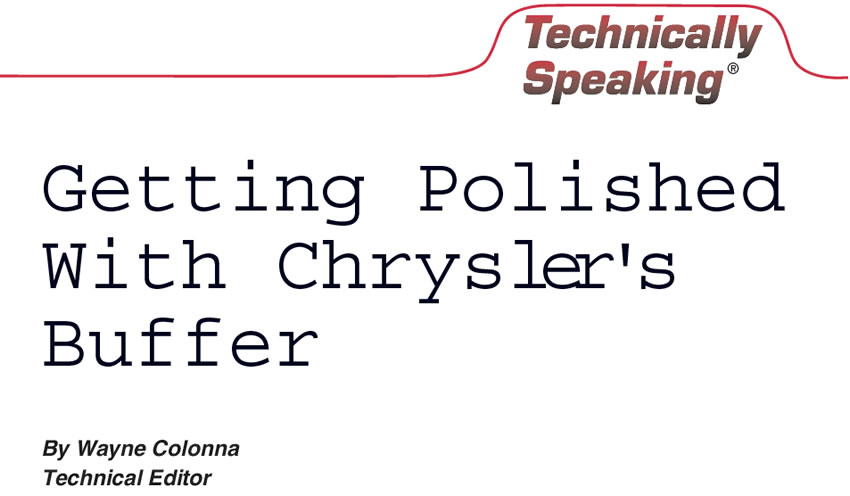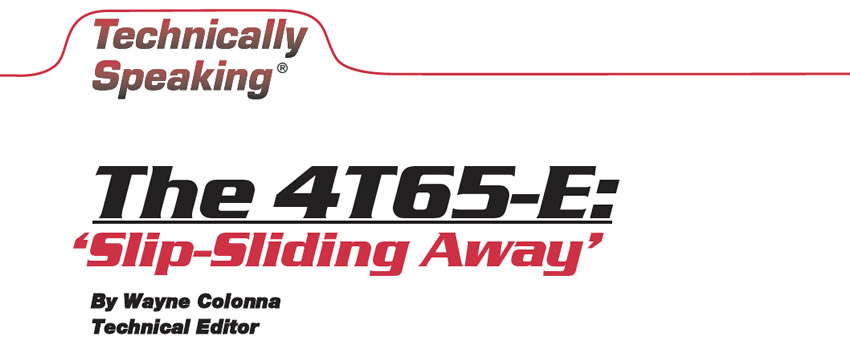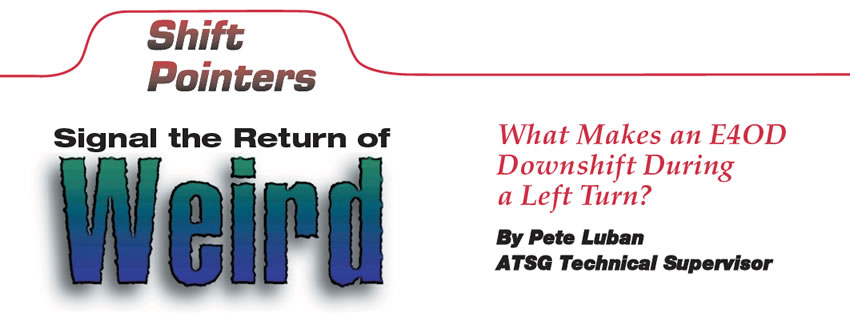Transmission Coolers, Part 2
Auxiliary coolers have been available for almost as long as automatic transmissions have. For many of us who have been around a while, most auxiliary coolers were used to supplement the factory transmission cooler for towing or other heavy-duty purposes. In the TASC Force Tips article “Contamination and Coolers” in the August issue, we discussed the need to replace some coolers, but I realized that there are no guidelines for choosing the right-size cooler to install.

No Vehicle-Speed Sensor?
A 1995 Lincoln Continental with an AX4N transmission comes into the shop with a gear-ratio-error code. As you are going through the diagnostic routine, you have pretty much determined that the unit needs to come out. But before you remove it, you decide to check for a glitch in the vehicle-speed sensor (VSS).

Getting Polished With Chrysler’s Buffer
The speed buffer in a GM vehicle (see Figure 1) is a familiar piece of hardware for most transmission technicians. And its operation of taking an AC voltage signal from a speed sensor and converting it to a DC pulse signal for the computer is just as familiar. But what does come as a surprise to many is that Chrysler uses a similar speed-signal strategy for many of its passenger cars and vans.

Problems With Metric Cooler-Line Fittings
Few things slow down an R&R job like frozen cooler-line fittings. The metric cooler-line fittings used in Isuzu 4L30 applications and Toyota trucks with A340/30-40LE (see Figure 1) are frustrating enough to make you want to reach for the tubing cutter and start cutting rather than struggle with stubborn lines.

I Hate Noises
By this time, I guess you’ve figured out that this article has to do with noise. I’m sure many of you reading this have your own noise-related horror stories. Noises are difficult to diagnose when you’re standing right there; on the phone, they’re next to impossible. (Have I mentioned that I hate noises?)

Plumber’s Helper
This month’s problem/fix comes to us from overseas and concerns the ZF 5-HP-24 transmission. Although this problem has occurred primarily in Jaguars in this shop, it also could occur in other makes using this transmission.
Here is how the symptoms were described to me: The car comes in with a complaint of harsh upshifts and downshifts, no codes are stored, and the transmission is not in limp mode.

KM End-Clutch Failure
Have you ever noticed that most of the complaints or failures you have with a KM involve a burned end clutch? The complaints tend to be sliding 1-2, 2-3 spin-up, neutraling on the 3-4 shift, delayed engagements, no forward or no reverse.
I’ve seen every one of these complaints, only to find the end clutch burned. You might be thinking, “What does a burned end clutch have to do with a sliding 1-2 shift?”

Hot Tech From the Hotline
Have you ever encountered spin-out of the front pump bushing on a Mitsubishi KM unit as shown in Figure 1? Several years ago Paul Yaklin produced a bulletin explaining how the converter pilot bushing would get stuck on the pilot of the converter (see Figure 2). When the converter is removed, the pilot bushing stays with the converter unnoticed. Inevitably, a rebuilt converter then is installed without the adapter bushing in the crank bore. As a result, the centerline of the converter becomes seriously misaligned.

Figuring Out the Fuso
We have had some confusion on the ATSG help lines in reference to 1999 and later Mitsubishi Fuso tilt-cab medium-duty trucks equipped with the Aisin Seiki.
The first problem is, how do I get codes out of these trucks? Since aftermarket scan tools do not communicate with these trucks, data is not available and code retrieval must be done via the flash-code method. That means that a certain procedure must be performed, after which a light somewhere on the dash will flash a code pattern. The illustration in Figure 1 shows the locations of the diagnosis switch and the memory-clear switch, both of which are single-pin connectors.

Coolers and Contaminants
Most of us have been battling cooler and contamination issues for years. We may not realize it, nor care to look for it, but it does manage to rear its ugly head.
First we need to look at the sources. Mike Steen (technical director at Certified Transmission) has spent considerable time on finding these sources. Along the way, I have found a few as well. Hung valves and stuck governors have plagued us for years. We thought the contaminants came from coolers. We bought flushers and flushed coolers, and the problem went away – well, not quite. We still have problems.

The 4T65-E: ‘Slip-Sliding Away’
Three to six months after you overhaul a 4T65-E transaxle, the vehicle may come back with a code, either P0730 (incorrect/undefined gear ratio) or P1811 (maximum adapt and long shift).
Generally, code P0730 occurs immediately after installation of a transaxle with an incorrect ratio. This could mean that either an exchange unit with an incorrect ratio was installed or incorrect sprockets and/or final drive was used during rebuild in the shop.

Signal the Return of Weird
Believe it or not, the cause of all of this was a faulty signal switch, or what Ford calls a multi-function switch. Replacing the switch solved all the complaints.

